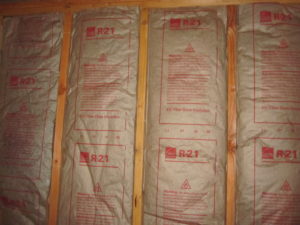 Indoor air quality probably isn’t constantly on your mind. That is, unless you’re one of the unfortunate millions who are allergic to mold. If you fall in that category you may notice sneezing, scratchy throat, and headaches just to name a few symptoms.
Indoor air quality probably isn’t constantly on your mind. That is, unless you’re one of the unfortunate millions who are allergic to mold. If you fall in that category you may notice sneezing, scratchy throat, and headaches just to name a few symptoms.
Household mold has been a hot topic in the news lately and most of it is warning us all we’ve probably got toxic black mold growing in our walls and the end is nigh.
Would you like me to give you some good news? (Who am I kidding? Of course you do!)
Toxic black mold isn’t as common as the media likes to pretend and most likely you’re safe.
That doesn’t mean you’re scot-free though from mold in general so today let’s talk about some of the root causes of mold and what you can do to rid yourself of the problem.
Basics of Mold Growth
Most people don’t know exactly how mold works and what it needs to grow. Water and food seem like obvious ingredients, but there’s a little bit more to it.
Did you know that mold needs humidity levels to be at 50% or higher? This means your bathroom with all those steamy showers you’re taking are prime locale.
It also needs the temperature to be 40 degrees or higher and a feeding source to pull nutrients from while growing. A feeding source for mold is a variety of things like dust, debris, and anything that contains cellulose.
Home Insulation and Mold Prevention
To get rid of mold, you need to keep the moisture inside your house in check and to do that you should start with home insulation. Insulation is your number one tool in managing the temperature and moisture within the house and if you’re slacking in the home insulation department, you’re extending an invitation to mold.
When installed correctly, insulation can be a life saver. If it’s not installed correctly, not only can it encourage mold growth by doing a poor job regulating moisture, but it can provide a feeding source for mold to grow within your walls.
That is something you want to avoid at all costs so we have some tips on how to select the best insulation.
What Insulation is Best?
Selecting the perfect home insulation can be overwhelming. There’s a huge selection of choices and the types range from fiberglass to cellulose to rigid or flexible. Different types of buildings can call for different types of insulation, and the best and most thorough information on insulation types can be found at the National Insulation Association’s website.
If mold prevention is your number one concern, you should look into fiberglass insulation. While it’s non-biodegrade, it is resistant to mold. Fiberglass is made of sharp pieces of ground glass and mold spores can’t survive when they land on it. They’re punctured by the glass before they attach.
It’s important to note though that mold can grow on the backing used for fiberglass insulation so that’s something to keep in mind. If you have the opportunity to use fiberglass insulation without the backing, that’s your best bet if mold growth is a concern.
Cellulose insulation, on the other hand, is a virtual all-you-can-eat buffet. It’s made of ground paper and if it becomes wet, it becomes an ideal breeding and feeding ground for mold. This type of insulation should only be used if you can guarantee it isn’t going to get wet.
More Questions?
Do you have more questions about insulation and mold growth? We have plenty of certified mold inspectors on hand who are willing to answer any questions you might have. Contact us today!







